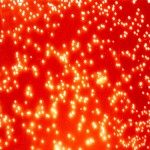Link to Pubmed [PMID] – 28785421
Microb Genom 2017 Apr;3(4):e000110
The global spread of Klebsiella pneumoniae producing Klebsiella pneumoniae carbapenemase (KPC) has been mainly associated with the dissemination of high-risk clones. In the last decade, hospital outbreaks involving KPC-producing K. pneumoniae have been predominantly attributed to isolates belonging to clonal group (CG) 258. However, results of recent epidemiological analysis indicate that KPC-producing sequence type (ST) 307, is emerging in different parts of the world and is a candidate to become a prevalent high-risk clone in the near future. Here we show that the ST307 genome encodes genetic features that may provide an advantage in adaptation to the hospital environment and the human host. Sequence analysis revealed novel plasmid-located virulence factors, including a cluster for glycogen synthesis. Glycogen production is considered to be one of the possible adaptive responses to long-term survival and growth in environments outside the host. Chromosomally-encoded virulence traits in the clone comprised fimbriae, an integrative conjugative element carrying the yersiniabactin siderophore, and two different capsular loci. Compared with the ST258 clone, capsulated ST307 isolates showed higher resistance to complement-mediated killing. The acquired genetic features identified in the genome of this new emerging clone may contribute to increased persistence of ST307 in the hospital environment and shed light on its potential epidemiological success.


